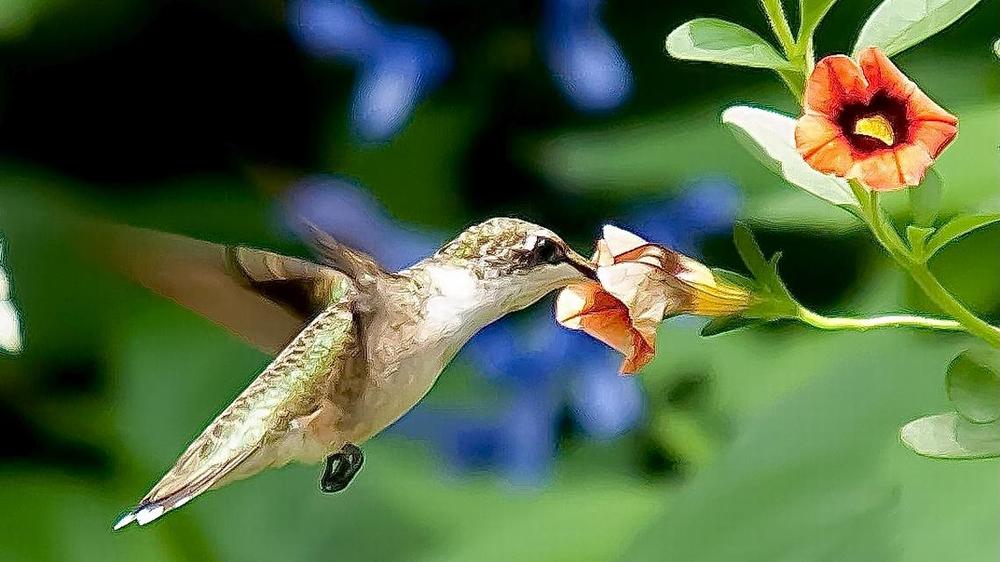
Caption
A ruby-throated hummingbird found the Superbells Tangerine Punch calibrachoa at The Garden Guy’s house to his liking, including spending extra time on an old blossom.
Credit: Norman Winter / Special to the Ledger-Enquirer

A ruby-throated hummingbird found the Superbells Tangerine Punch calibrachoa at The Garden Guy’s house to his liking, including spending extra time on an old blossom.
Spring weather is right around the corner, which means more hummingbirds in Georgia.
Why is that?
According to Hummingbirds Plus, “When the days become longer and the weather becomes a little bit better, hummingbirds make their way back up north through most of the United States. This migration process usually starts around the end of February, and by March people will start to notice hummingbirds in different areas.”
It takes almost two full months for hummingbirds to migrate across the whole country, from the south to the north. Hummingbirds Plus has a migration map that shows migration from March 1 to May 10, with the most hummingbirds reaching Georgia around March or April.

This migration map shows when hummingbirds begin and end their springtime migration. From start to finish, it takes about two months for these little creatures to get where they need to be before summer.
In Georgia, the most common hummingbird, the ruby-throated hummingbird, actually nests in the Peach State.
The Georgia Department of Natural Resources (GA DNR) identified the other species as: black-chinned, rufous, calliope, magnificent, Allen’s, Anna’s, broad-billed, green violet-ear, green-breasted mango and broad-tailed hummingbird.

The ruby-throated hummingbird is the most common species of hummingbird in Georgia.
While we have had some cooler temperatures in Georgia as of late, warmer days are certainly ahead and when those temperatures do come, so will these cute creatures.
Here’s how to prepare for their arrival:
Some believe you should only put your feeders out during the spring months, but according to Wild Bird Scoop, you can actually leave one out all year:
“Typically, feeders for migrating species should be taken down only after no more hummingbirds are seen for a couple of weeks. Usually, it is safe to remove feeders in November in Georgia. However, if there are year-round occupants in your area, you might also consider leaving your hummingbird feeders out for the entire year to provide for winter residents.”
If you like to only put them out during spring months, Wild Bird Scoop recommends putting them out in February.
Here are directions from GA DNR on how to make the best and healthiest hummingbird feed:
If you don’t normally get many hummingbirds, here are a few tips to get your garden ready for those little wings:
This story comes to GPB through a reporting partnership with The Telegraph.